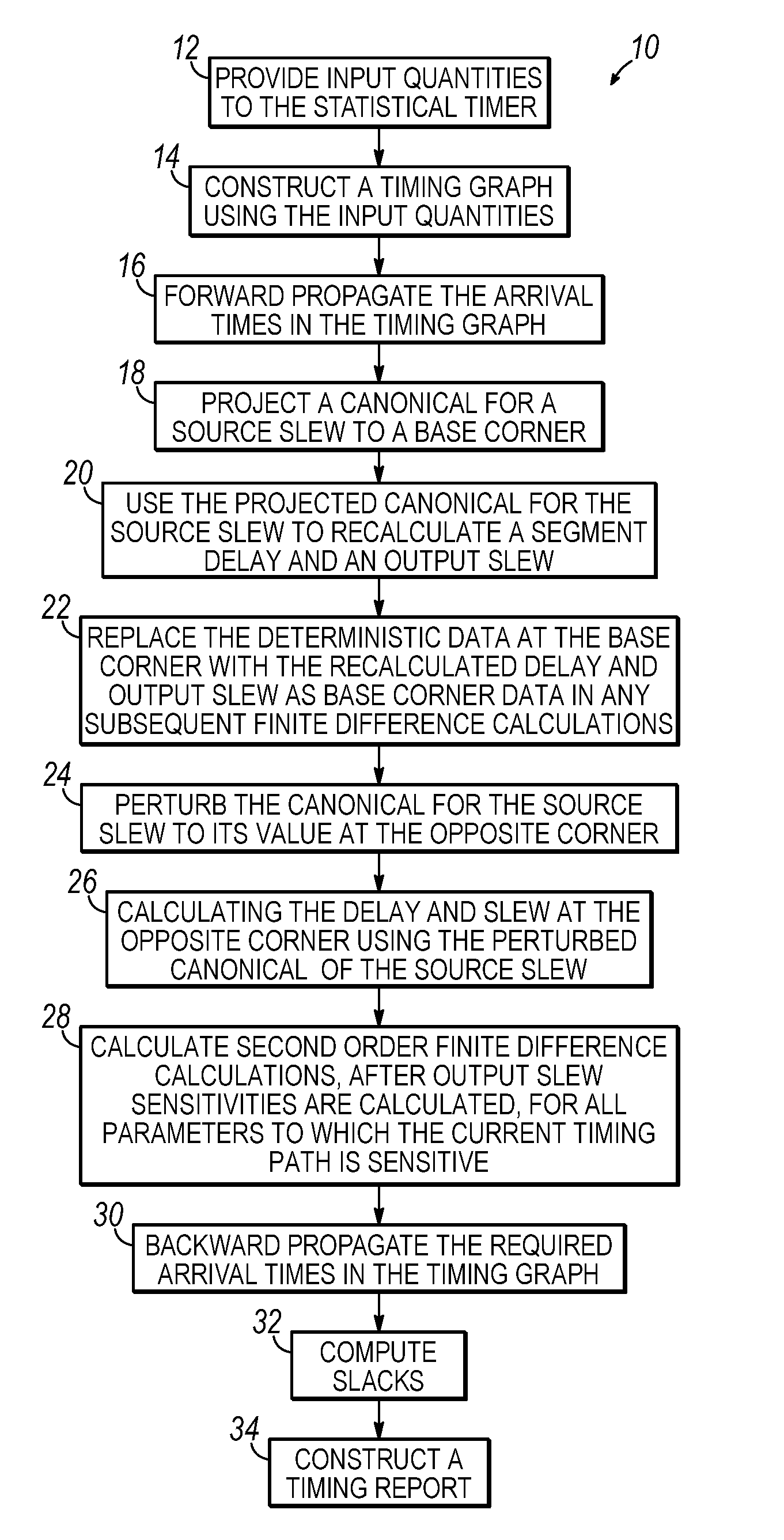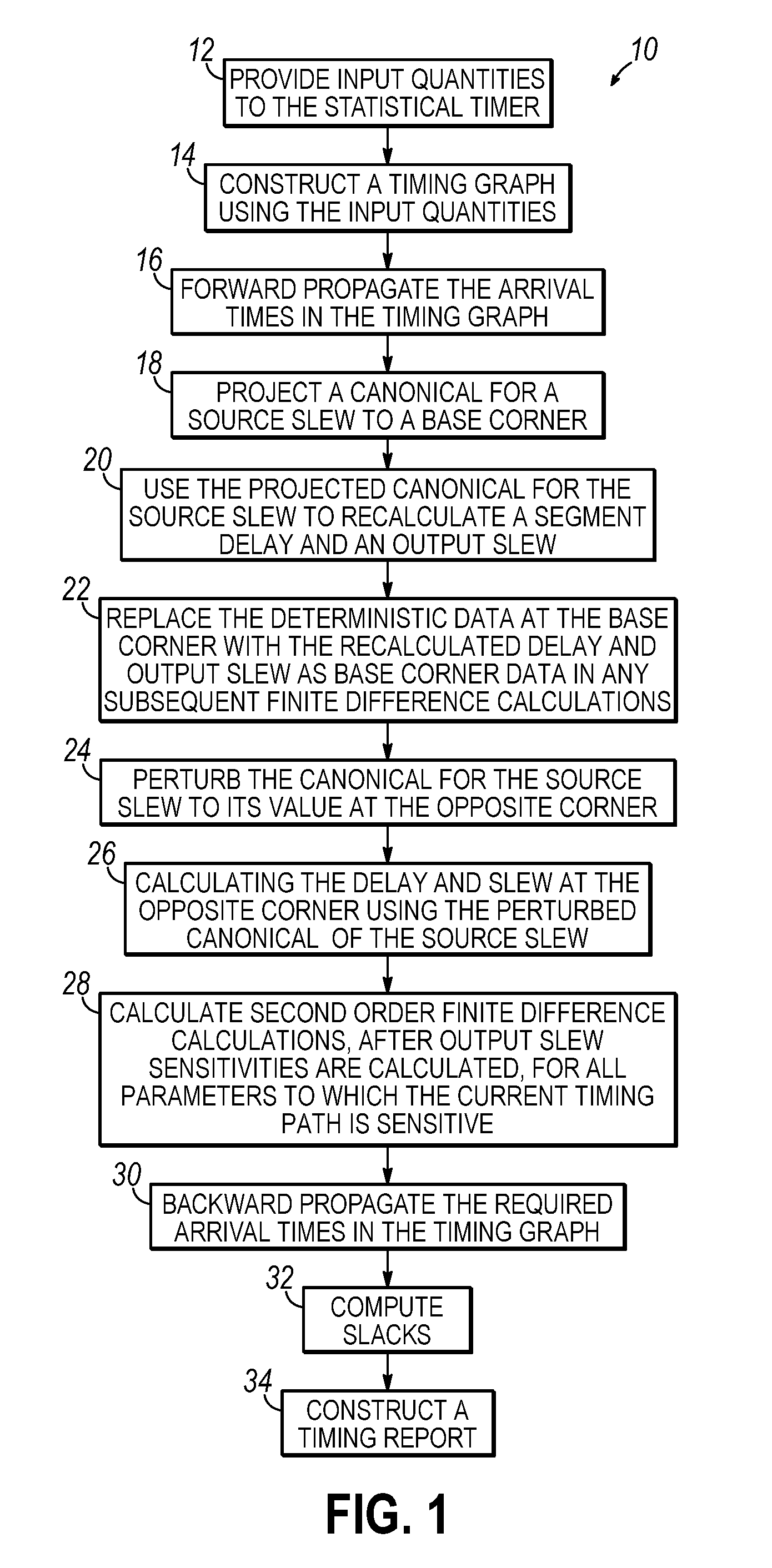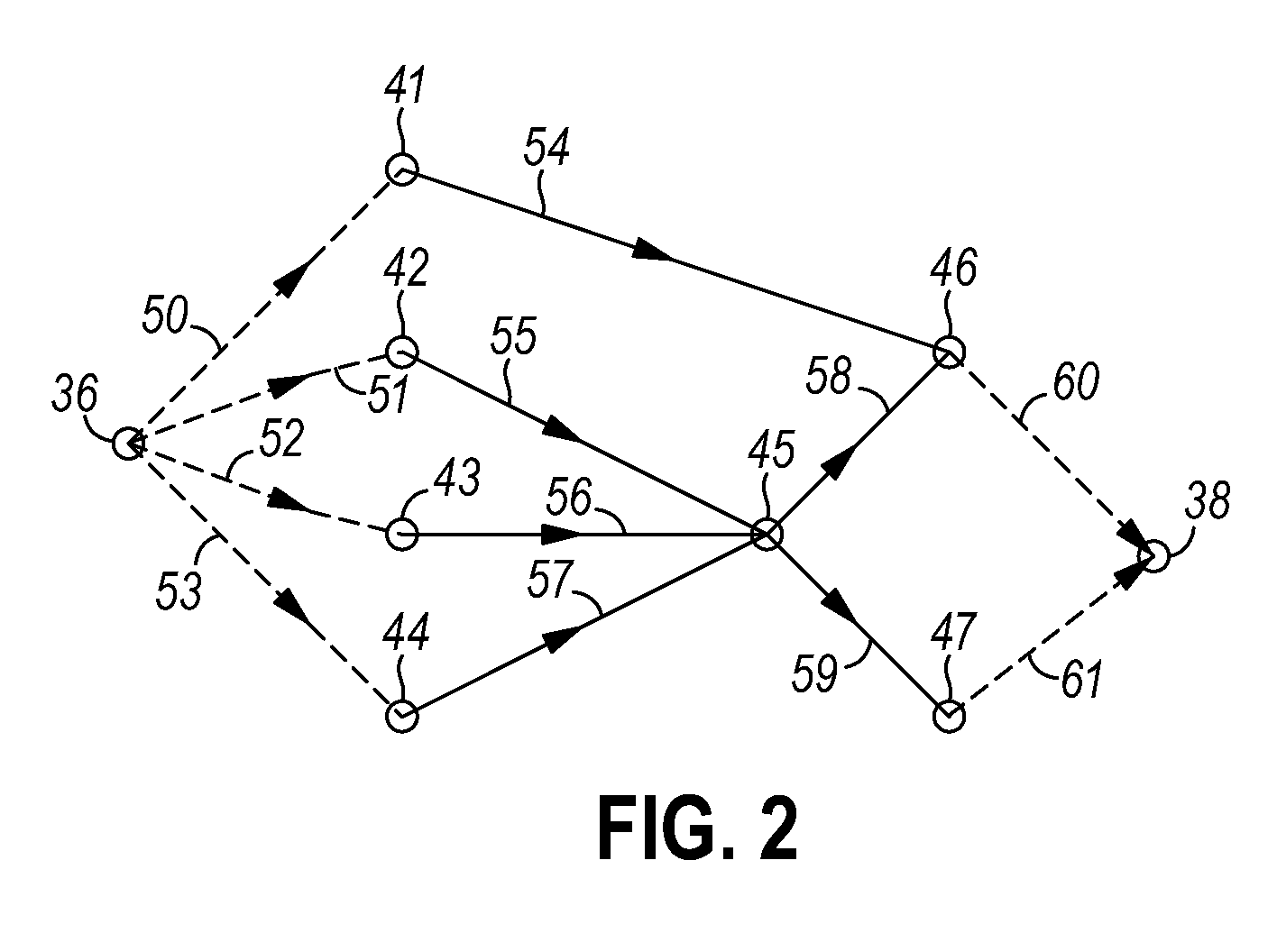Methods for statistical slew propagation during block-based statistical static timing analysis
a statistical static timing and block-based technology, applied in the field of integrated circuit design, can solve the problems of significant errors, over-pessimistic and misleading optimization tools, and the delay sensitivity to slew can be highly non-linear
- Summary
- Abstract
- Description
- Claims
- Application Information
AI Technical Summary
Benefits of technology
Problems solved by technology
Method used
Image
Examples
Embodiment Construction
[0026]With reference to FIG. 1, a process flow 10 for a statistical timer that performs statistical static timing analysis (SSTA) is shown. The statistical timer utilizes a block-based approach to SSTA that propagates probability distribution functions, or an approximation thereof, from each node to the successive node and, so on, until each probability distribution function reaches a sink node. The probability distribution functions are propagated using a statistical maximum operation for early mode ATs (setup timing constraint) or a statistical minimum operation for late mode ATs (hold timing constraint).
[0027]In block 12, inputs are supplied to the statistical timer. Specifically, the statistical timer reads and flattens a netlist representing the structure of the circuit to be analyzed, a set of timing assertions, a set of canonical delay models governing the sources of variation in the space of process variations, sensitivities relating the delay attributable to each individual...
PUM
 Login to View More
Login to View More Abstract
Description
Claims
Application Information
 Login to View More
Login to View More - R&D
- Intellectual Property
- Life Sciences
- Materials
- Tech Scout
- Unparalleled Data Quality
- Higher Quality Content
- 60% Fewer Hallucinations
Browse by: Latest US Patents, China's latest patents, Technical Efficacy Thesaurus, Application Domain, Technology Topic, Popular Technical Reports.
© 2025 PatSnap. All rights reserved.Legal|Privacy policy|Modern Slavery Act Transparency Statement|Sitemap|About US| Contact US: help@patsnap.com



